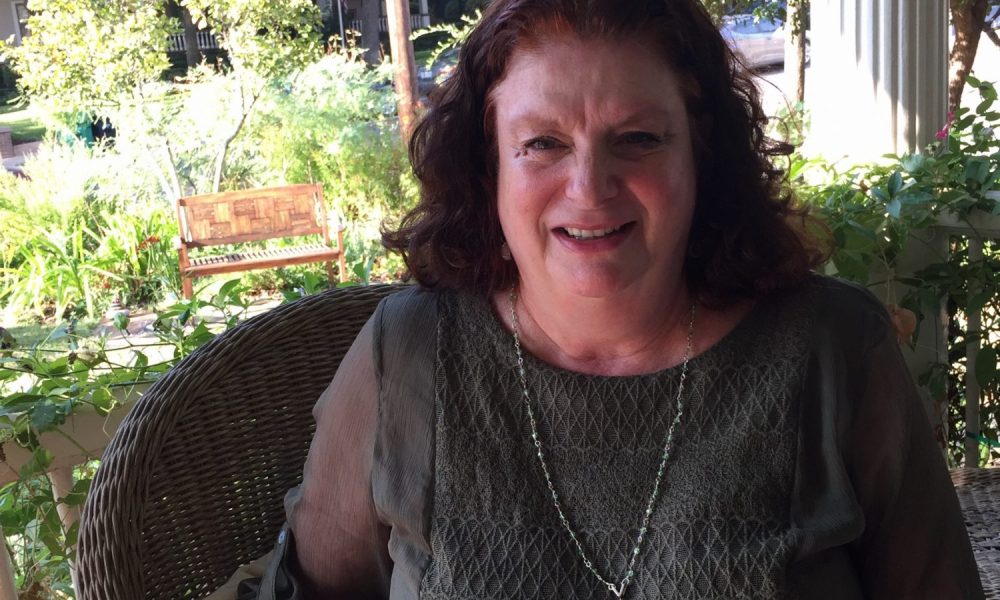

Today we’d like to introduce you to Annetta Ramsay.
So, before we jump into specific questions about the business, why don’t you give us some details about you and your story.
I grew up in a Dallas suburb and graduated from SMU with degrees in Dance and Anthropology. While completing my Master’s and Doctorate at UNT in Counselor Education, I began treating eating disorders. At the time, eating disorders weren’t very well understood, but supervisors supported my early work. In the beginning, clients were my best teachers, but over the past 30 years, I’ve participated in a growing knowledge of how best to treat eating disorders.
I’m a Ph.D. trained nationally certified and licensed counselor supervisor. Recently, I became a Certified Eating Disorders Specialist with the International Association of Eating Disorder Professionals. I’m also an OpEd Thought Voices Fellow, and I’ve written over 30 opinion journalism articles, many on the topic of eating disorders.
The Chrysalis program started in 1996 because I saw a need for outpatient treatment for eating disorders in Denton, where no treatment was available. Our program is small by design, and we have refined it over the past 21 years. Chrysalis started as a six week program, but we eventually found the 24 week program had the best results.
We’re always bombarded by how great it is to pursue your passion, etc – but we’ve spoken with enough people to know that it’s not always easy. Overall, would you say things have been easy for you?
When Chrysalis began, the biggest obstacle was a lack of understanding about eating disorders, both from health professionals and from families.
Eating disorders affect about 30 million American women and men, and about one in four high school girls and boys. The mortality rate is the highest for any mental illness; roughly five percent, or one in twenty women or men struggling with an eating disorder, dies.
Fortunately, most family members now understand the seriousness of eating disorders. Even families without insurance are aware of the deadly consequences of eating illnesses; they actively pursue treatment, and our program is affordable.
Recently, the biggest obstacle to working with eating disorders is insurance companies who generally don’t pay for adequate treatment. On top of that, the State of Texas doesn’t license Intensive Outpatient Programs (IOP) like Chrysalis, so insurance companies won’t cover outpatient programs unless they are in a hospital setting, which is what makes residential programs so expensive.
Because of the difficulty of working with insurance companies for outpatient treatment, we became an out of network provider. This also gives us the added leverage to recommend the treatment we believe is best, without having companies say they won’t cover it. Some families choose to not even attempt to use insurance so there won’t be an electronic record of their child’s treatment; that’s something to think about for patients who are 15 or 16 years old.
We’d love to hear more about your business.
Chrysalis is an Intensive Outpatient Program for Eating Disorders. Our patients attend group two nights a week for 24 weeks, and they get psychoeducation, art therapy, a therapeutic meal, and group therapy. They also see a therapist and a dietitian weekly.
Since we don’t take insurance, we keep the cost as low as possible. Many patients do have insurance, and they get varying levels of coverage from their insurance companies.
Another feature of our treatment is that it starts and stops at the same time for everyone. Residential treatment groups can have 15-20 members, and they are always saying hello or goodbye to someone in the group. Our groups have 5-7 members, and they start and stop on the same dates, which better enables our staff to individualize care. The 24 week format encourages patients to get better within that period of time. Patients “graduate” at the end of the program, and with few exceptions, like a recent trauma, they don’t continue.
Patients bring their own food, and they have to include specific food groups. We encourage them to eat as much variety as possible. Occasionally, we have group members who have never really cooked, so we have a cooking lesson. We also have a restaurant outing and holiday meals to simulate family celebrations that can be distressful. Since food isn’t provided to patients, they learn to put together balanced, adequate meals for 24 weeks, something many patients don’t learn in inpatient settings.
We’ve also been fortunate to have dedicated staff members who are invested in the outcome for our patients. Denton has two state universities with several training programs, and we have gotten a number of interns who provide assistance.
Another unique feature of our program is that a fully licensed counselor runs the group. Other programs allow counselor interns with master’s degrees to run groups. We allow them to help, but our counselors are fully licensed.
In the U.S., many people believe residential treatment is the best way to start recovery. My experience with Chrysalis has shown me that outpatient treatment has certain advantages. Of course, some cases are so serious that inpatient care is the best and only option, but many patients don’t need that higher, more expensive level of care. Sending a patient with a less serious eating disorder to inpatient care when they are don’t need it exposes them to other patients who may teach them how to better practice their eating disorder. Because our patients are generally less ill, we have a very high recovery rate. Most of our patients are significantly better, or close to recovery at the end of the 24 week program, and they continue to attend individual sessions and meetings with the dietitian for about a year after they complete Chrysalis.
While a year and a half sounds like a long recovery period, research has shown that the average recovery is 7 years. Another research study showed that people with eating disorders think about food a large percentage of the time. It’s normal to think about food 30 percent of the time – what’s for lunch, what groceries do I need to buy, etc., but in the case of anorexia, the research study showed patients think about food more than 100 percent of the time because they also dream about food. That’s why the IOP program works better than just individual counseling, because it gives the patient more hours each week to challenge eating disorder thoughts. Our patient’s average recovery period is two years; patients who complete the program and the aftercare they need have an 80 percent recovery rate, which is extremely high.
Although IOP works for many people, probably 20 percent of my patients don’t need it, and they respond well to individual counseling, nutritional counseling with our dietitian, and occasional meetings with family members. We strive to individualize each patient’s care and to keep treatment at the lowest appropriate level. If we need the IOP program, we have it, but some patients don’t need group treatment.
I call our approach to recovery “inside out recovery.” Instead of telling patients they can no longer engage in their eating disorder, we ask them to engage in disordered eating behavior less and less. The recovery is slower, and, I believe, more lasting, but it puts the patient in control, helping them learn what does and doesn’t work.
A patient who enters a residential treatment facility may stop engaging in disordered eating immediately, but they often relapse when they return to the real world. I call this approach to recovery “outside in” because change is imposed by the treatment, and the patient may not be engaged.
An outpatient setting allows patients to continue life while they are in recovery. We like our patients to be in school or working, at least part-time as they attend the program. The advantage is that they get better in the environment where they got sick. They don’t struggle to re-enter a life they never left, giving them a greater sense of ownership about their recovery.
My proudest moment has been, and continues to be, seeing people recover. Seeing clients finish treatment, when they and I believe they are better, is the best feeling. It never gets old. I hear from former clients all the time who report they are maintaining their recovery. People can and do recover from eating disorders.
What were you like growing up?
I was born in San Antonio, and I grew up in Farmer’s Branch, a suburb of Dallas.
Pricing:
- The cost is $450 per week, or $2700 for each 6 week module. That’s the full cost, without any assistance from health insurance.
Contact Info:
- Address: 722 West Oak Street, Denton, TX 76201
- Website: www.northtexaseatingdisorders.com
- Phone: (940) 382-5688
- Email: Annetta.Ramsay@gmail.com






Getting in touch: VoyageDallas is built on recommendations from the community; it’s how we uncover hidden gems, so if you know someone who deserves recognition please let us know here.

















